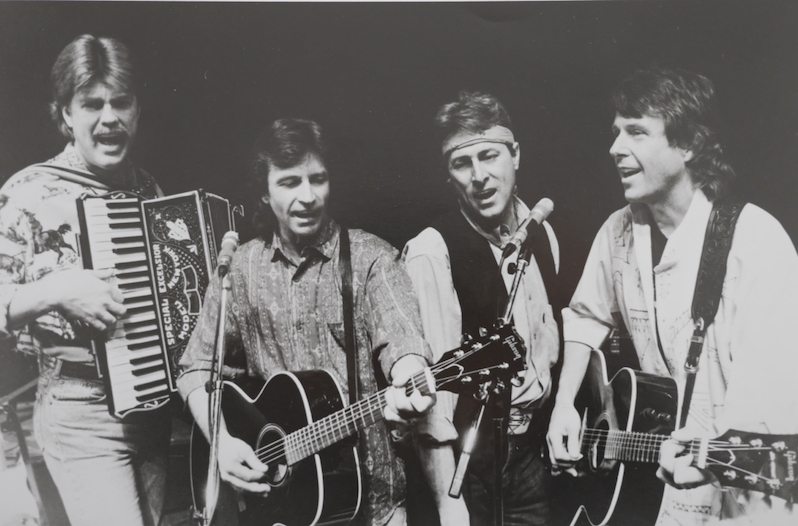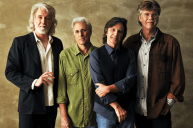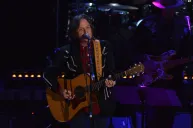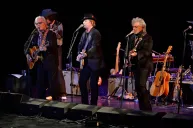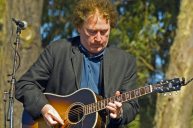[dropcap]I[/dropcap]n 1971, the Nitty Gritty Dirt Band were riding high from the success of their pop hit "Mr. Bojangles." The band, made up of a group of country-loving California hippies, could make any record they wanted. They were poised to take both the country and rock world by storm. Instead, the band used their opportunity to pay tribute to their musical heroes. The result was the groundbreaking Will the Circle Be Unbroken. Released in 1972, the album bridged the gap between folk rock and roots music. No one could've guessed just what an impact the record would have.
Videos by Wide Open Country
Seeing the Light
The Nitty Gritty Dirt Band was founded in 1969 in Long Beach, Calif. by Jeff Hanna and Bruce Kunkel. Long Beach wasn't exactly a hot bed of country culture, but the West was seeing an influx of country and roots music by way of bands such as The Byrds and The Flying Burrito Brothers.
In 1970, the band recorded the Jerry Jeff Walker-penned "Mr. Bojangles." The stripped-down story song was a departure from the heavily-produced music that ruled Music City in the late 1960s. The boys planned to continue in that vein.
They began to realize that the originators of country music were fading from the spotlight. With the help of banjo pioneer Earl Scruggs, the men assembled a dream team of Nashville legends. Along with Scruggs, the band collaborated with Roy Acuff, Doc Watson, Merle Travis, Mother Maybelle Carter and several others.
This group of counter-culture kids from the West Coast had their first hit on the country charts with a Hank Williams gospel number recorded with Roy Acuff.
The record became a love letter to the roots of country music. Much like the O Brother Where Art Thou soundtrack in 2000, Will the Circle Be Unbroken proved what many fans have always known: bluegrass and roots music will always be cool.
The album featured songs arranged by A.P. Carter, who had traveled throughout the Appalachian mountains in the 1930s in search of songs to record as part of his seminal folk group, The Carter Family. The album title comes from the old hymn, "Will the Circle Be Unbroken?" arranged by A.P. Carter and recorded by The Carter Family.
"Mother" Maybelle Carter joined the Nitty Gritty Dirt Band to record The Carter Family's "Keep on the Sunny Side" for Will the Circle Be Unbroken.
The album also shined a light on lesser known musicians, such as fiddler Vassar Clements, who's been called the Father of Hillbilly Jazz.
Will the Circle Be Unbroken was like a scrapbook of special moments from country music history. Along with iconic performances, the record captured studio discussions between Nashville veterans and their young proteges. The studio even captured first meeting of Doc Watson and Merle Travis, after whom Doc's son, Merle, was named.
Forever Unbroken
The record was both a critical and commercial success. When the Nitty Gritty Dirt Band performed at the 1974 Ozark Music Festival in Sedalia, Missouri, nearly 35,000 people showed up to see the roots revivalists.
And it wasn't just die-hard country history aficionados buying the record. Will the Circle Be Unbroken introduced roots music to kids who had never heard of Doc Watson or Jimmy Martin. Suddenly, the entire nation was falling in love with mountain music. Bluegrass and country was for long-haired hippies too. The album rose to No. 4 on the Billboard country albums chart.
The California band became part of a larger movement of folk singers making the trek to Nashville. Bob Dylan had made waves when he recorded a string of albums in Music City in 1966. Soon after, artists such as Joan Baez, Linda Ronstadt and Neil Young followed suit. The Nitty Gritty Dirt Band was unique because they enlisted the founding fathers and mothers of country music to perform with them, helping to bridge the gap between the youth culture and the more conservative American heartland.
The album went on to inspire younger artists like Bruce Springsteen, another artist who's occupied the space between country and rock.
The Nitty Gritty Dirt Band released Will the Circle Be Unbroken Vol. Two in 1989 and Vol. Three in 2002. Both albums featured some of the same performers from the original record, along with new collaborators. Will the Circle Be Unbroken Vol. Two won three Grammy Awards and the CMA award for Album of the Year.
In many ways, Will the Circle Be Unbroken was a precursor to today's Americana movement. The album encouraged younger generations to look to the past for inspiration and collaborate across generations and genres. Will the Circle Be Unbroken proved that whether songs are five years old or 100 years old, there will always be an audience for great music.
